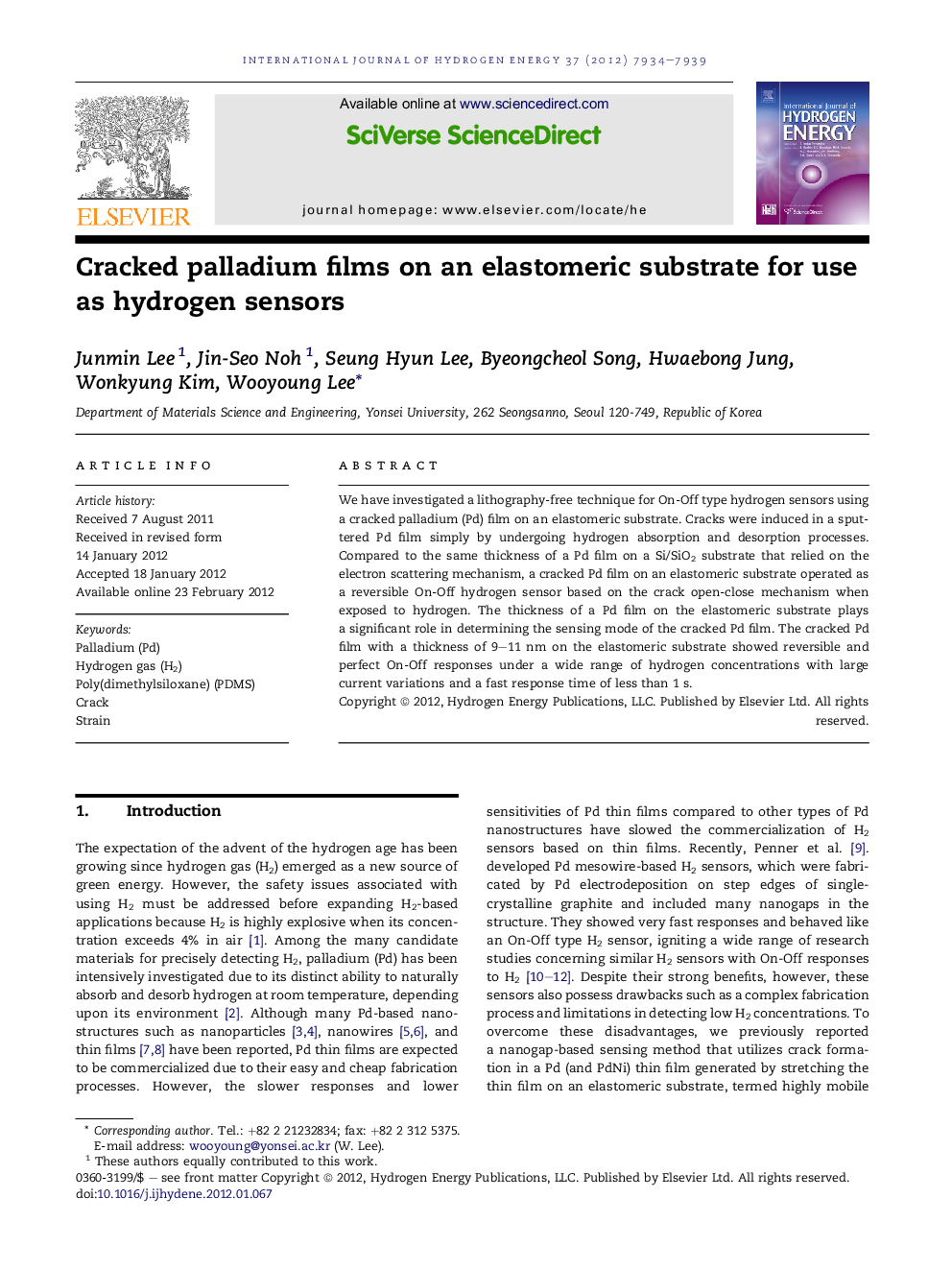| Article ID | Journal | Published Year | Pages | File Type |
|---|---|---|---|---|
| 1278596 | International Journal of Hydrogen Energy | 2012 | 6 Pages |
We have investigated a lithography-free technique for On-Off type hydrogen sensors using a cracked palladium (Pd) film on an elastomeric substrate. Cracks were induced in a sputtered Pd film simply by undergoing hydrogen absorption and desorption processes. Compared to the same thickness of a Pd film on a Si/SiO2 substrate that relied on the electron scattering mechanism, a cracked Pd film on an elastomeric substrate operated as a reversible On-Off hydrogen sensor based on the crack open-close mechanism when exposed to hydrogen. The thickness of a Pd film on the elastomeric substrate plays a significant role in determining the sensing mode of the cracked Pd film. The cracked Pd film with a thickness of 9–11 nm on the elastomeric substrate showed reversible and perfect On-Off responses under a wide range of hydrogen concentrations with large current variations and a fast response time of less than 1 s.
► Palladium-sputtered elastomeric substrate only needs exposure to H2 for cracking. ► The cracked Pd films show nearly perfect reversible On-Off behaviors. ► The elastomeric substrate plays a key role in easing expansion and contraction of broken Pd pieces. ► The role of the film thickness in determining the sensing mode of the sensors is also examined.
